6 Easy Steps to Creating Your Butterfly Garden
Butterflies are among the most beloved insects. Someone once called them flying flowers. They float, they flutter and they dazzle us with their colors. We relish their dance of spring. Then there’s the bad news: Because of pesticides and habitat loss, the populations of our cherished butterflies is in decline.
A few simple tips will have you on your way to creating your own butterfly habitat. Any home garden, even a container garden, can attract butterflies. My vision is a patchwork of schools, businesses, home gardens and parks around the country that provide insect habitat, restoring communities of beneficial insects. The steps are simple — like most of earth’s creatures, butterflies just need food, water, sun and a safe place to have a family.
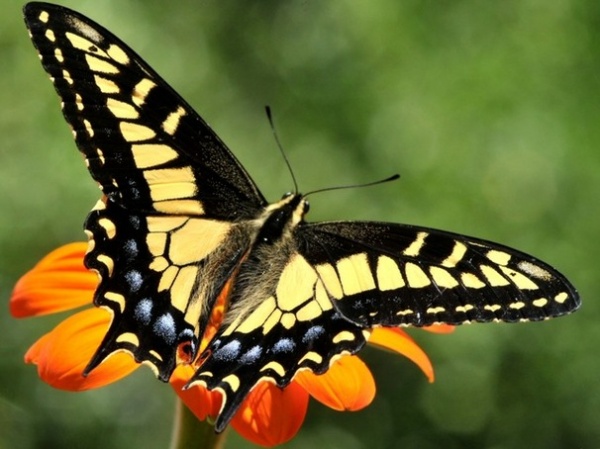
1. Use a Diversity of Plants
Butterflies, including the anise swallowtail (Papilio zelicaon) seen here, want nectar from a diversity of flowering plants. And they find the plants when they are in large blocks of color. Like a sign over a roadside diner, blocks of color say, “Hey, we’re open for lunch.” Select a variety of nectar plants for adult butterflies using these guidelines:
Select plants that are native to your area (learn how to find the right native plants for your yard).Include several plant species that flower at the same time.Have a combination of flowering annuals and perennials.Choose flowers of different sizes, shapes and colors.Plant blocks of color: patches of at least 3½ feet by 3½ feet of a single plant species and color.Have plants flowering through the growing season, from spring to late summer.
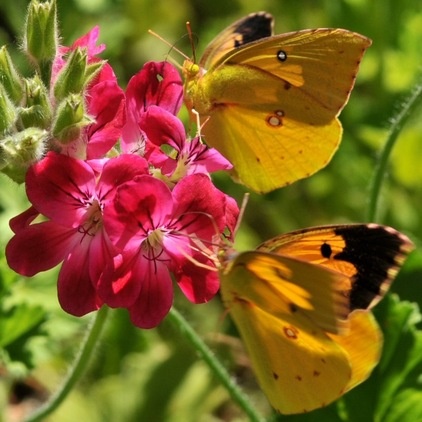
Nectar plants. There are many plants, both native and introduced species, that adult butterflies use for nectar. These California dogface butterflies (Colias eurydice) are feeding on a geranium (Pelargonium sp). Be sure to check out additional resources for a full list of nectar plants. Here’s is a short list of California native plants that butterflies find particularly tasty:
Aster family (Asteraceae family)Buckwheats (Eriogonum spp)Coyote brush (Baccharis spp)Mallows (Malacothamnus spp)Monardella (Monardella spp)Sages (Salvia spp)
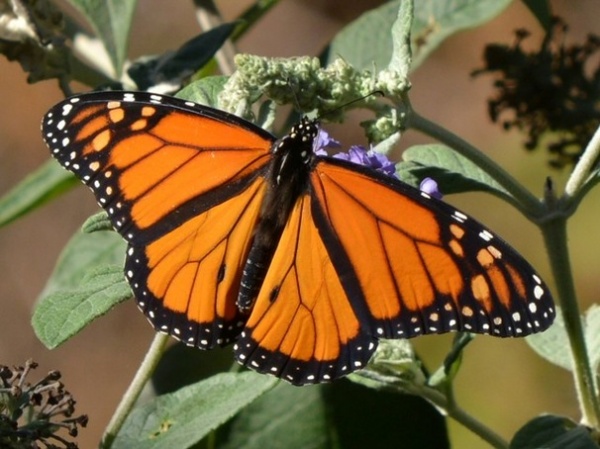
Caterpillar food plants. It’s a little more challenging if you want butterflies to reproduce and lay eggs in your garden. But it’s worth it. Adult butterflies lay their eggs only on or near plants that their caterpillars will eat. And every butterfly species has its own regional distribution and its own caterpillar preferences. Caterpillars of one butterfly species — like the anise swallowtail — may eat a large number of plants, whereas other caterpillars are very picky eaters — like the caterpillars of the monarch butterfly (shown), who feed exclusively on milkweeds (Asclepias spp).
To create a habitat that encourages butterflies to reproduce, select caterpillar food plants, also called host plants, for the butterflies in your region. And better yet, select caterpillar plants for butterflies you find in your specific neighborhood.
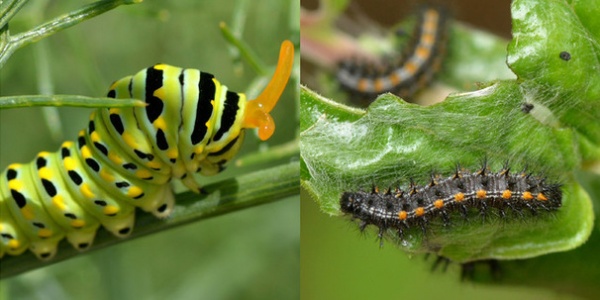
To the left is the caterpillar of the anise swallowtail butterfly (Papilio zelicaon) showing its brilliant orange osmeterium, a defense mechanism. On the right is the web-spinning caterpillar of the variable checkerspot butterfly (Euphydryas chalcedona). Both of these caterpillars have specific needs when it comes to their host plants. Anise swallowtail caterpillars will eat nearly anything in the large carrot family. The variable checkerspot caterpillar feeds primarily on sticky monkeyflower (Mimulus aurantiacus) and sometimes on California bee plant (Scrophularia californica).
Following are three caterpillar food plants and the butterfly species that rely on them:
Milkweeds (Asclepias spp): Milkweeds are the only plant that monarchs will use for reproduction and are critical to monarch caterpillars.Buckwheats (Eriogonum spp): Bramble hairstreak, American painted lady, Comstock’s hairstreak, Mormon metalmark, common hairstreak, Gorgon copper, blue copper, acmon blue, square-spotted blue, dotted blue, Mojave blue, Edward’s blue, Elvira’s blue, Bernardino blue, California green hairstreak and buckwheat blue California lilacs (Ceanothus spp): Doudoroff’s hairstreak, echo blue, hedgerow hairstreak, pale swallowtail, pacuvius duskywing and spring azure

Gulf fritillary butterfly (Agraulis vanillae), shown here, and cabbage white butterfly (Pieris rapae) thrive throughout the U.S. Many species of little yellow grass skippers are exceptionally easy to attract. Provide them with juicy grasses, like sedge (Carex spp), and you’ll have an instant butterfly garden.
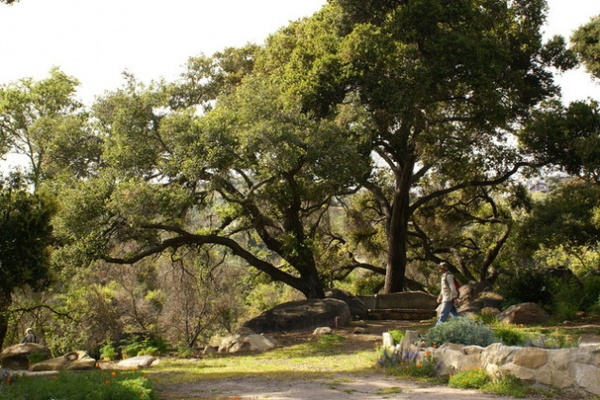
Oaks (Quercus spp), like this one in Santa Barbara, California, are important habitat plants for all kinds of wildlife. Oaks host a number of butterflies and moths. Be sure to look for varieties native to your area.
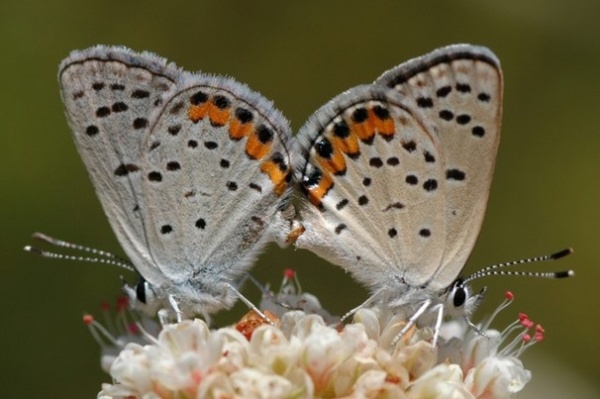
These acmon blue butterflies (Plebejus acmon) are mating on California buckwheat (Eriogonum fasciculatum), one of their favorite caterpillar plants.
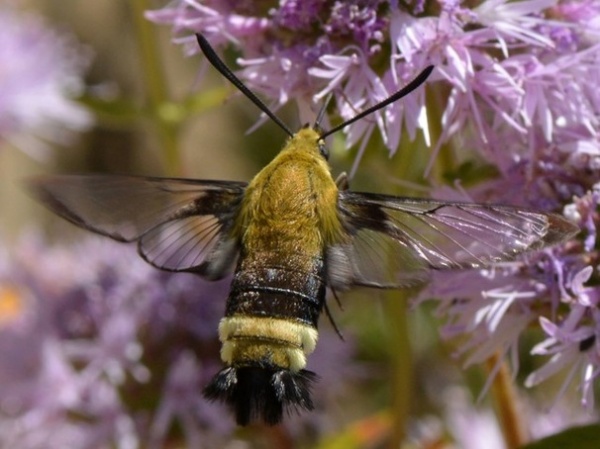
And don’t forget the moths. For every species of butterfly, there are nine or 10 species of moths. Some are beautiful, like this California clearwing moth (Hemaris thetis) on California native thickleaf monardella (Monardella hypoleuca). Moths have the same requirements as butterflies. Add a few plants for moths, then go outside after sunset and enjoy the show.
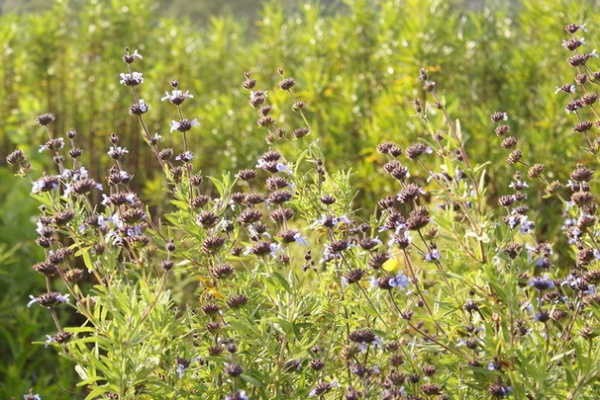
2. Plant in Full Sun
Butterflies are cold-blooded, and they need sun to warm up and get going in the morning. This brandegee sage (Salvia brandegeei) loves the hot sun and is a nectar plant for many butterflies. Additionally, a few sunny rocks, with their radiant heat, provide a nice perch for butterflies.
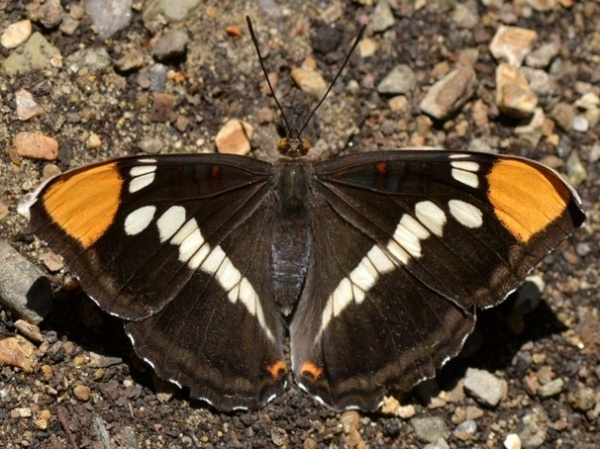
3. Add Water
Like all critters, this California sister butterfly (Adelpha bredowii) needs water. This one is “puddling” in the wet ground of a home garden, taking up moisture, minerals and salts.
A small patch of wet ground is all that’s needed for a butterfly garden. There are a number of ways to get a wet patch. Put a shallow container or a garbage can lid in the ground and add water, and you have an instant butterfly puddle. Another lovely option is to install a water feature that gently splashes on the surrounding soil and rocks. Butterflies aren’t judgmental — they don’t care if you use a plastic milk carton with a hole in the bottom or an elegant urn. Water and damp soil give butterflies the moisture and nutrients they need.
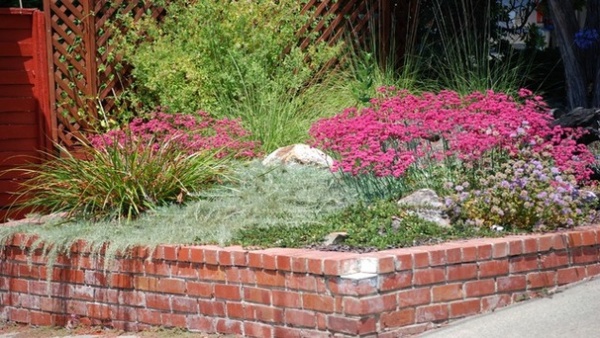
4. Protect Egg-Laying Sites
Besides the joy of procrastination, there are advantages to an untidy garden: butterflies. Adult butterflies lay their eggs on or near the host plants.
Pupation and overwintering sites are typically nearby in dry, protected spots between rocks and in leaf litter. So don’t clean up in the fall and winter. Wait until later in spring, after those little caterpillars wake up and find their spring breakfast treasure.
Buckwheats, like the red buckwheat (Eriogonum grande var. rubescens) shown here, are host plants for a number of butterfly caterpillars.
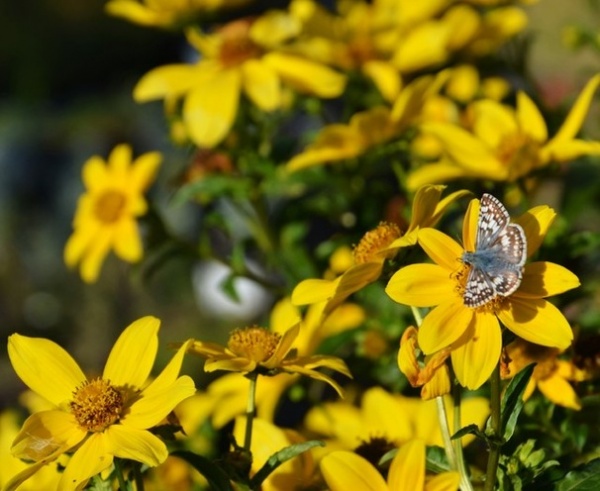
5. Don’t Use “’Cides”
Insects are particularly sensitive to toxins. The use of pesticides, herbicide, fungicides or other ’cides in or near a wildlife garden is counterproductive. This is particularly true of Bacillus thuringiensis (Bt), a bacterial insecticide.
Instead, leave the bad bugs. Plants can easily tolerate up to 10 percent damage from insects. Then the good bugs will find and destroy the bad bugs — and hey, most bad bugs aren’t as bad as we think. There is a natural balance. Worry less about insects as pests and think more about insects as guests.
Bid Bad Garden Bugs Goodbye and Usher In the Good
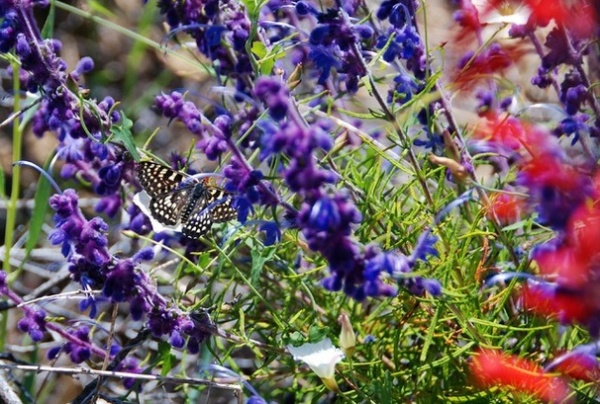
6. Have a Willingness to Learn
I love learning more about all kinds of critters, such as this variable checkerspot (Euphydryas chalcedona) feeding on wooly blue curls (Trichostema lanatum). A lot of information exists about caterpillar host plants, butterflies in different regions and all the fun things we can do to encourage butterflies in our gardens.
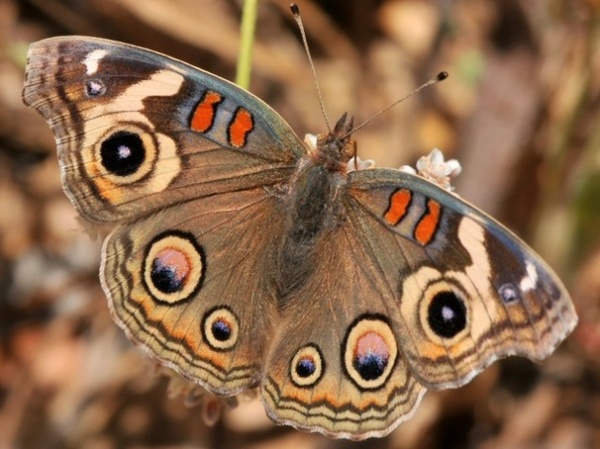
For more information contact your university extension, native plant society or local native-plant nurseries. Here are a few resources to help you on your butterfly journey:
The California Native Plant SocietyBook: Butterfly Gardening: Creating Summer Magic in Your Garden, by the Xerces Society and Smithsonian InstitutionRegional info: Northern California foothills and Sacramento Valley, by the University of California, DavisRegional info: San Francisco Bay Area, by the Regional Parks Botanic GardenRegional info: Southern California, by Las Pilitas NurseryRegional info: Los Angeles, by the North American Butterfly AssociationShown: Common buckeye (Junonia coenia) on California buckwheat (Eriogonum fasciculatum)
More: See more ways to garden for butterflies












